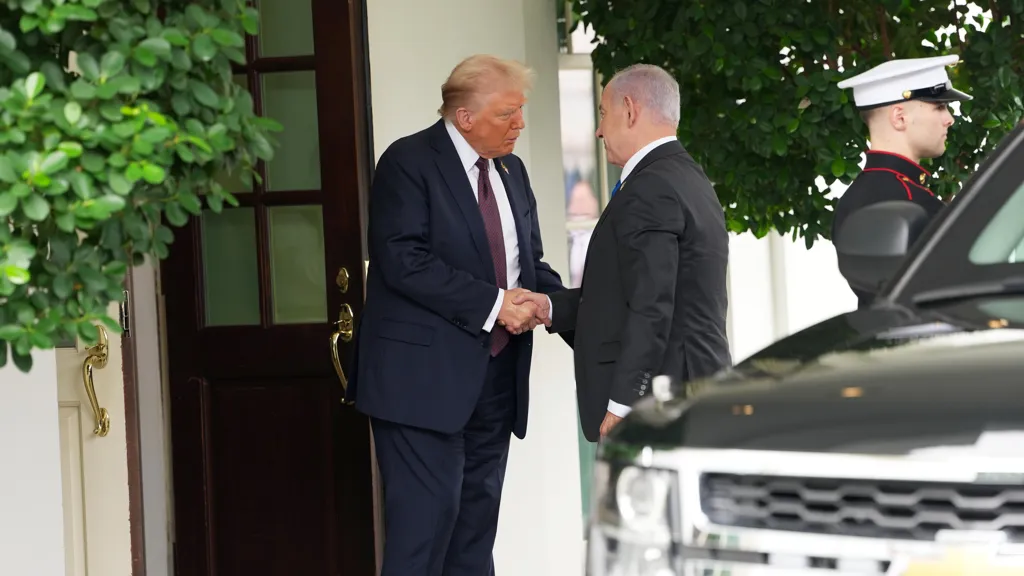President Trump said on Wednesday that Israel and Hamas had agreed to the initial phases of a 20-point peace plan aimed at ending their war in Gaza and bringing home hostages held in the enclave in exchange for Palestinian prisoners.
Mr. Trump presented the sweeping plan during a meeting late last month at the White House with Prime Minister Benjamin Netanyahu of Israel.
The proposal called for an immediate end to the war and the release of all remaining hostages in Gaza, living and dead, in exchange for Palestinian prisoners; a pullback of Israeli troops in Gaza; and an influx of aid into the enclave, which is in the grips of a severe humanitarian crisis.
But there are elements of the plan, and of Mr. Trump's long-term vision for the enclave, that Hamas has resisted in the past, and which may yet prove to be sticking points.
The proposal calls for Hamas to disarm and to have no role in the governance of Gaza. These are conditions that Israel has long demanded and that Hamas has steadfastly rejected.
Under the plan, Hamas, which has governed Gaza since 2007, would be replaced by a "technocratic, apolitical Palestinian committee" overseen by a supervisory "Board of Peace," with Mr. Trump as chairman and a leadership role for Tony Blair, the former British prime minister.
According to the White House proposal, "Gaza will be a de-radicalized terror-free zone that does not pose a threat to its neighbors" and "will be redeveloped for the benefit of the people of Gaza."
The board would set a framework for the redevelopment of Gaza, including funding reconstruction for a period of time while the Palestinian Authority undergoes a "reform program" so that it can "securely and effectively take back control of Gaza." The authority, which administers part of the Israeli-occupied West Bank, has been accused of corruption.
The board is supposed to "create modern and efficient governance that serves the people of Gaza and is conducive to attracting investment." A special economic zone is to be established, with preferred tariff and access rates to be negotiated with participating countries.
Under the peace proposal, no one will be forced to leave Gaza. Those who wish to leave will be free to do so, and free to return. "We will encourage people to stay and offer them the opportunity to build a better Gaza," the proposal says.
Mr. Trump had previously suggested that Gazans could be relocated to other nations, perhaps neighboring states, a notion that drew widespread condemnation and that he has since abandoned.
Under the proposal, regional partners in the Middle East will ensure that Hamas complies with its obligations, and the United States will work with Arab and international partners to develop a temporary "International Stabilization Force" to immediately deploy in Gaza.
The stabilization force "will train and provide support to vetted Palestinian police forces in Gaza, and will consult with Jordan and Egypt who have extensive experience in this field," according to the plan. That force is to work with Israel and Egypt to help secure border areas along with newly trained Palestinian police forces.
Critically, the proposal states that Israel will not occupy or annex Gaza and "will withdraw based on standards, milestones and time frames linked to demilitarization that will be agreed upon." Far-right members of Israel's government have called for annexation of the enclave.
The United States will establish a dialogue between Israel and the Palestinians with the goal of agreeing on a political horizon for peaceful and prosperous coexistence, according to the plan.
The proposal does not, however, guarantee the establishment of a Palestinian state. It says only that as Gaza redevelopment advances and the Palestinian Authority reform program is carried out, "the conditions may finally be in place for a credible pathway to Palestinian self-determination and statehood, which we recognize as the aspiration of the Palestinian people."
